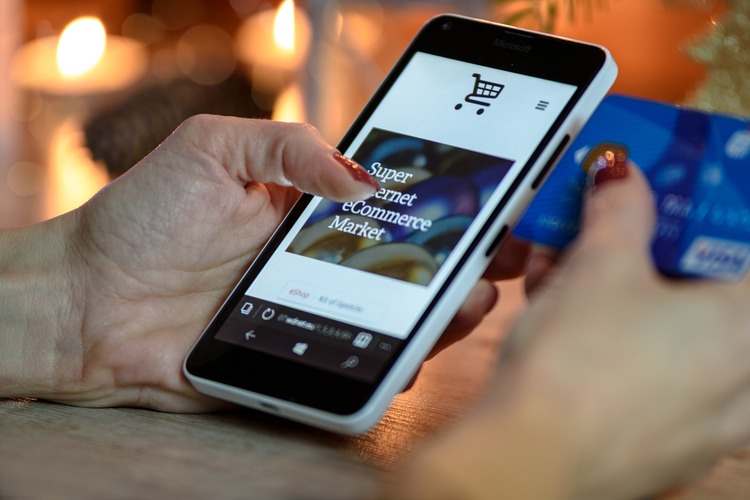Contact Centre Payments – Going Mobile

Rob Crutchington at Encoded looks at how the mobile market is changing the way customers choose to make payments.
Over recent years there has been a huge increase in the number of Smartphone users, apps downloaded and mobile transactions, presenting new challenges for contact centres.
In fact, according to this year’s UK Contact Centre Decision Makers’ Guide (DMG) by industry analyst ContactBabel “Statistics show the number of Smartphone users, volume of apps downloaded and the value of mobile transactions are rising so quickly that they would be out-of-date before the report was published”. An astonishing thought.
The rise of the Smartphone
This rise of the Smartphone has changed the way customers choose to interact with companies. Not just browsing for goods or services, they are now actively using their mobile devices to check balances, pay bills, order items online or post reviews. This means whether banking, checking utility bills or shopping, customers expect quick, easy access to their favourite transactional websites.
This has meant that companies have had to make changes to the mechanics of their websites, updating them to make them truly ‘mobile friendly’. According to the ContactBabel report, of the contact centres providing mobile customer service, over 80% now have a mobile version and around 50% offer a Smartphone app.
Omni-channel is now all-knowing
The key difference is that customers want to act (such as pay a bill) or make a decision (sign up for a service or buy online), rather than just browse websites. As a result, the contact centre is no longer just managing calls and emails they must be able to handle customer enquiries and payments via text and social media, such as Facebook Messenger, Twitter and other apps to provide a superior service.
This increase in the use of mobile raises some interesting issues and challenges, highlighted in the DMG report. The nature of a mobile phone is that is can provide a lot of information about the caller including the person’s ID, their location and other stored data such as account and payment details. As ContactBabel states, “Businesses can now know more about their customers and their specific requirements and preferences than ever before”.
The obvious benefits are that the company immediately has customer information during a call, which aside from the necessary security questions, facilitates a smoother customer journey. Background data can also provide opportunities to check a customer’s browsing and purchase history, to enable agents to offer promotions and up/cross sell during the interaction.
Maximising mobile service functionality
A rise in the use of Instant Messaging (IM) where customers can choose to make payments automatically by simply replying to an IM message has also changed the role of customer services. It allows customers to make payments ‘in their time’ and reduces the number of voice calls needed to chase payments. It is also a useful tool for companies to promote products or services or for customer service surveys. ContactBabel claims that; “large operations are more likely to be using SMS to communicate with customers, with 82% of respondents from this size band doing so.” However, where larger companies go now, smaller ones are sure to follow.
Making customer data security a priority
So far so good. However, with these great opportunities also come responsibility and that means ensuring that both the customer’s ID and payment details are protected. Any payments must comply with PCI DSS regulations and the new GDPR mandate to ensure mobile and online security of data (ways to tackle these are discussed in the PCI Compliance and Card Security chapter of the ContactBabel report).
As a PCI-DSS Level One Accredited Supplier, Encoded has for some time provided contact centres and their customers with a secure payment platform to ensure that transactions are fully automated and that confidential data is stored centrally and securely. Our new customer engagement platform now expands the offering to accommodate this mobile world.
The Encoded customer engagement platform works with SMS and other forms of IM including Facebook messenger and WhatsApp to support outbound dialling and integrates with many other services such as email and voice to enable multi-channel transactions. Designed with PCI DSS and GDPR in mind, it ensures complete security of mobile and online customer data. It also incorporates Artificial Intelligence (AI) technology that simulates human conversations to handle routine parts of customer interactions, which means a smaller number of contact centre staff can handle a larger number of transactions.
True customer engagement reaps benefits
There are many benefits to be gained from embracing this new mobile world – from facilitating faster payments, reducing debt levels with faster resolution of accounts (and less agent time spent chasing), to keeping customers updated via broadcasts of product offers and promotions. If your contact centre hasn’t yet gone mobile, then now is the time to act. Customers will vote with their Smartphone, not their feet, and choose the companies that offer true mobile omni-channel customer service.
source contactcentres
Industry: Unified Communications News
